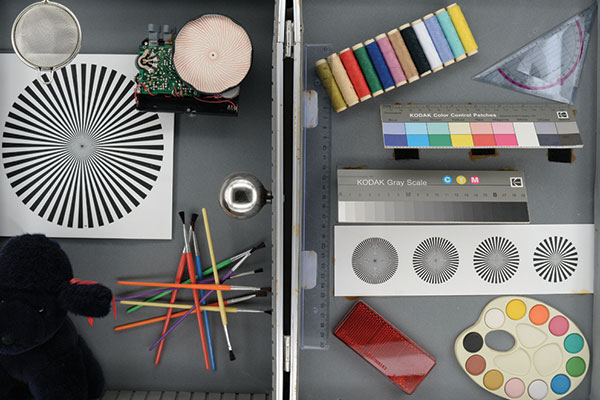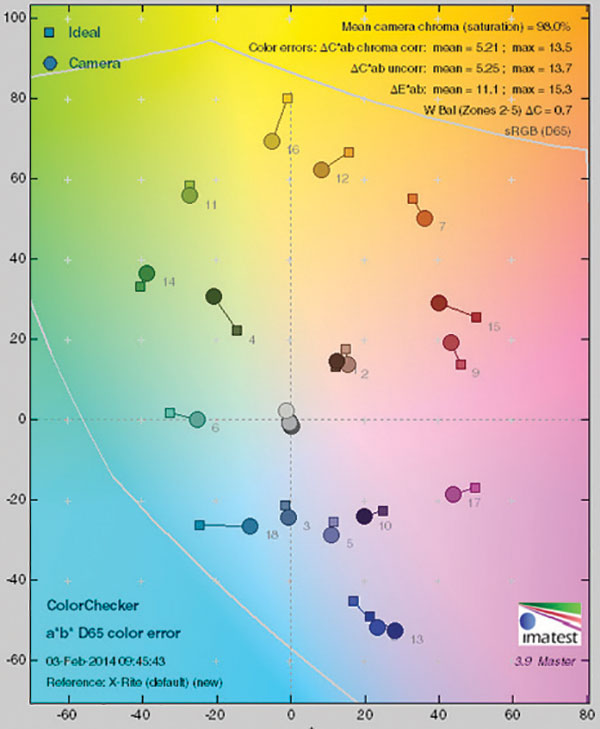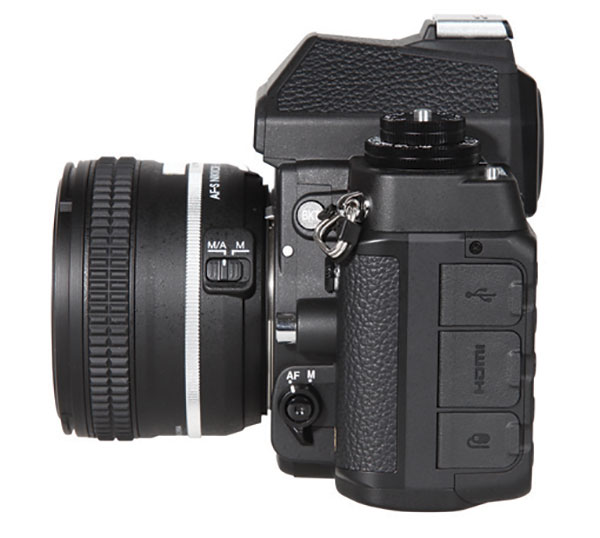Nikon Df DSLR Review
The Nikon Df is a retro-style SLR camera with a 16MP full-frame sensor. While other Nikon SLRs, such as the D4, are clearly aimed at the professional and enthusiast markets, with all the attendant features of modern D-SLRs, the Df is clearly a “classic” camera approach, intended for “purists.” That may be the reason why the Df offers no video capabilities, for example.


Due to its retro design, the Df has a thinner body than, for example, the D4. This is less handy than the design of a modern D-SLR, with its bulky grip on the right side that seems to fit perfectly into the photographer’s hand. Nevertheless, the camera allows the user to set up all parameters quite easily. Many setup dials, function buttons, and control wheels allow for changes to the ISO setting, EV compensation, shutter speed, frame mode (single shot, continuous shot high, continuous shot low, self-timer, etc.), and exposure mode. Most dials on the top are locked and can be rotated only by pressing and unlocking a button. Those used to click-style changes without this step might find it a bit awkward, but with use it is easily incorporated into the camera operation.
The camera uses two setup dials to change additional parameters. The first dial is located on the front. Due to the smaller camera body, the smaller handgrip, and the form of this dial, changing parameters is not as comfortable as with a dial that is located near or in the front of the shutter release button. The second dial is located on the back and is worked with the thumb of the right hand.
The camera has a fixed 3.2” LCD screen on the back with a resolution of 921,000 RGB dots, a bit low for a D-SLR in this price range. The camera does have a large (0.7x) and bright optical viewfinder, which allows for comfortable shooting.
In continuous shot mode the Df offers a frame rate of 5.5 frames per second. But it does offer a very fast AF system with 39 AF sensors (including nine cross-type sensors), which allows the user to focus very comfortably. Shutter delay and start-up times are extremely low and on a professional level.
Image Quality
Color: The colors look very natural. The Nikon Df doesn’t show the typical oversaturation of most digital cameras and reproduced the test chart with 98 percent saturation. Color errors are on a very low level and even dark blue nuances show only a slight shift, while most other Nikon cameras show a boost in blue nuances. The automatic white balance system showed an excellent performance. The test images had only a minor shift into the blue areas and placed nearly exactly in the center of the test chart. Only the brightest gray nuance is shifted into the yellow and green direction. The skin tones nearly match their given values, with a realistic and natural look.
Sharpness: The camera showed a very good performance in our resolution tests. The nominal sensor resolution of 3280 lines per picture height is transferred nearly completely into image details (test result: 2993 lines per picture height). We did detect some overshot effects (exaggerated contrast lines), but the “real life” shots show a clear and natural look without any artificiality due to over-sharpening. The test shots were done with the AF-S Nikkor 50mm f/1.8G (a special edition lens available in kit form with the Df).

The differentiation in monochrome areas is excellent. Details in the black toy pet or the red spool in the upper right are clearly noticeable in our test box shot. Fine structures in the portrait shot (hair, fabric of the T-shirt) are also shown in a very crisp but still natural-looking way.
Noise: The “pixel noise” RGB graphs in our tests show remarkably high aberrations, but the overall noise level is so low and the “noise spectrum” is so smooth that there is hardly any noise, even at the highest ISO settings of 6400 and 12,800. Color noise gets visible in the additional high ISO modes, but images taken at ISO 25,600 and ISO 51,200 are still usable. Only at the highest ISO speed settings of ISO 102,400 and ISO 204,800 do the noise artifacts become really annoying.
The dynamic range results are also excellent. The camera gained a maximum of 11.9 f/stops and kept a high level of nearly or even more than 10 f/stops in images taken at ISO 12,800.

Scorecard
Pro
+ Professional SLR system in retro design
+ Sealed body, splashproof
+ Many function elements, buttons, and dials allow the user to set up the camera nearly the same way as an analog SLR system, even without using the LCD menu
Con
- Missing swivel monitor
- Missing digital comfort features like WLAN and GPS function (GPS module is available as an option)
- Missing video capabilities
The Nikon Df (body only) has a list price of $2749.95; $2999.95 with the “special edition” AF-S Nikkor 50mm f/1.8G kit lens. For more information, visit www.nikonusa.com.
Image Tech is where we publish web-exclusive lab reports on cameras. To read the reports please go to the Shutterbug homepage at www.shutterbug.com and click on the Image Tech tab on the top navigation bar. New reports are published frequently, so check Image Tech for updates.
Lab results and test images by BetterNet, our TIPA-affiliated testing lab. Edited by George Schaub.
- Log in or register to post comments





















































